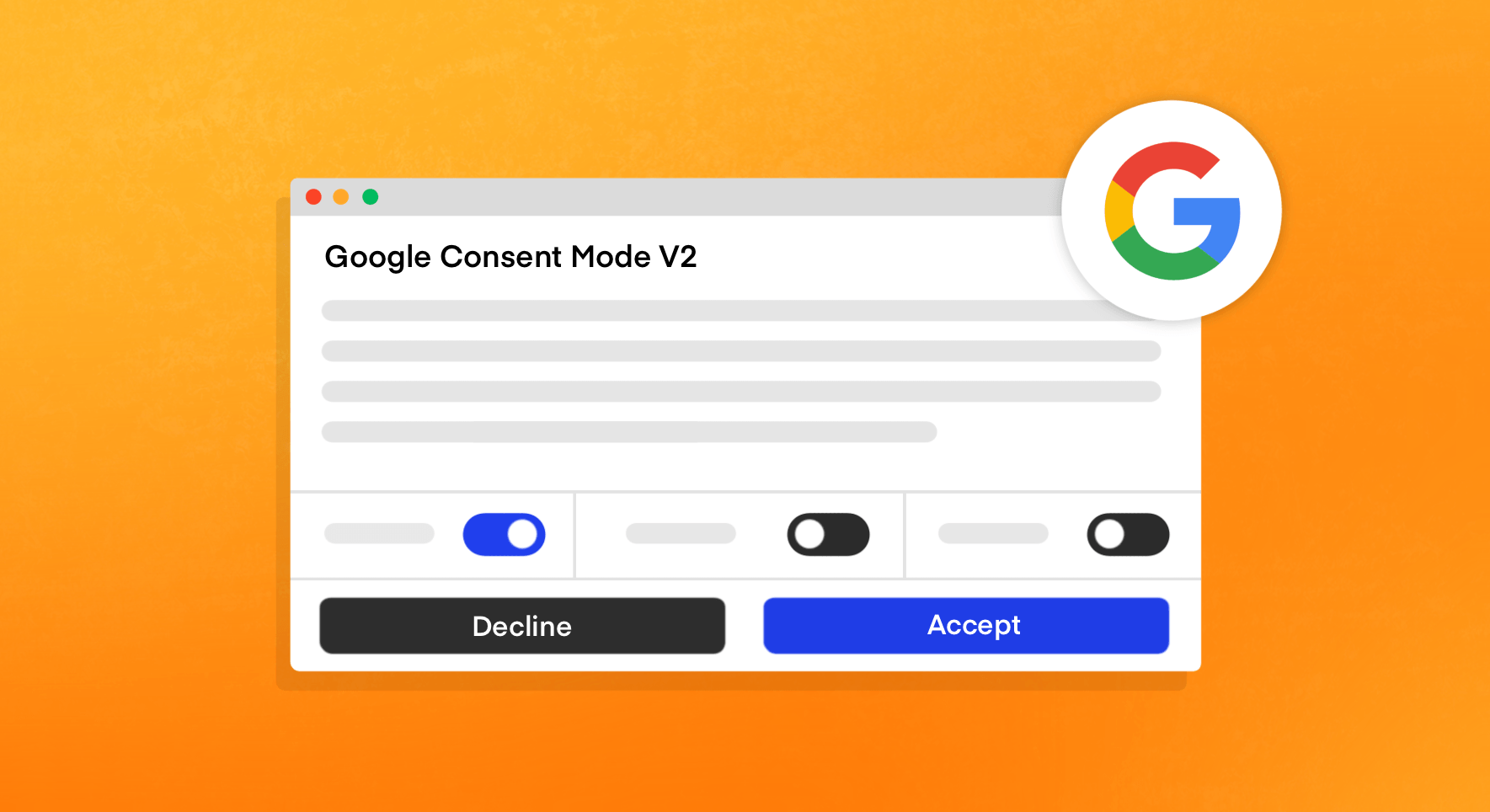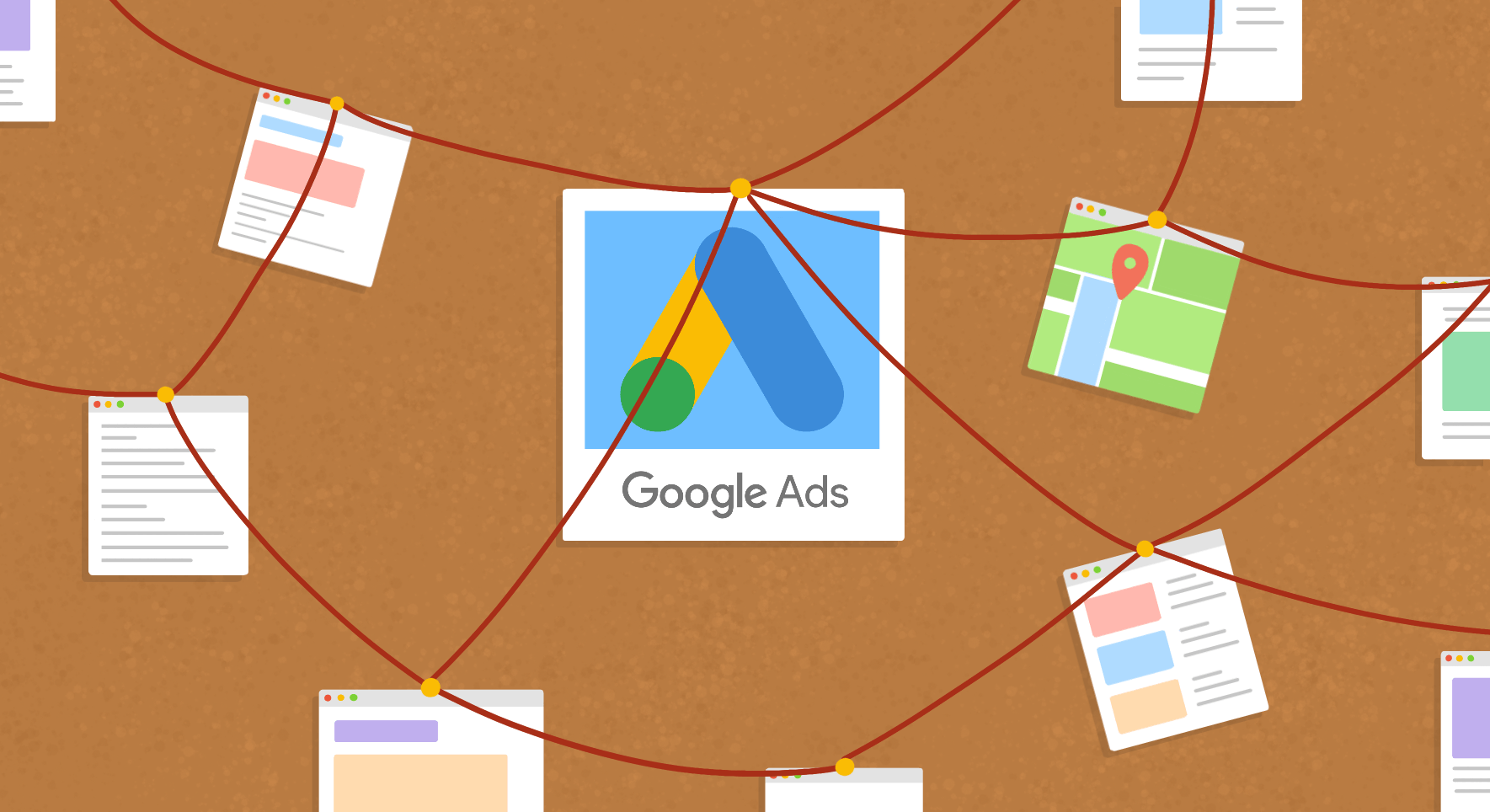2024 will be a big year for digital advertisers in Europe. The European Digital Markets Act (DMA) is due to be enforced and regulated from March 2024, forcing digital companies like Google to take action to comply. That’s why Google has introduced Google Consent Mode V2.
The DMA makes advertising platforms like Google and Meta responsible for collecting user consent. To comply with this new regulation, Google is making Google Consent Mode V2 mandatory for advertisers targeting users in the European Economic Area (EEA), so they know whether a user has consented to online cookie tracking.
If you’re not prepared, you’re likely to see a pretty seismic impact on your advertising when Consent Mode V2 comes into play. Google Consent Mode V2 can cause your conversion tracking to break, affecting your ad optimisation, conversions, and revenue. So you need to know how Google Consent Mode V2 works, and how to minimise its effect on your marketing.
Let’s dive into what you need to do today to futureproof your campaign performance in 2024.
What if a Website Doesn’t Have Consent Mode V2 Implemented?
If you don’t send consent information via Google Consent Mode V2 from 6th March 2024, Google will block you from capturing new EEA user data in your Google audiences. You won’t be able to store new user data in your Google Analytics 4 audience lists, or share it with Google Ads. This could have a massive impact on your ability to convert new customers.
Google’s algorithms rely on clean, accurate data to effectively target potential customers. So if your site doesn’t have Google Consent Mode V2 activated and you’re unable to collect user data:
- You won’t be able to remarket to new site visitors.
- Your Google Ads performance will take a hit due to low quality data.
- Google’s algorithm won’t be able to predict or track your conversions effectively.
- Your ad spend will become less efficient, meaning higher spend with worse results.
Advertise to Humans, Not Bots
Get a demo and save up to 20% of your advertising budget by automatically eliminating fake ad clicks across all paid channels.
The Transition to a Privacy-First Web
User privacy is a key concern for governments and individuals alike right now. People are increasingly aware of the risks of sharing sensitive information online, causing governments to implement new laws and regulations that force tech companies like Google to update their services. Consent Mode v2 is Google’s response to the Digital Markets Act, which is designed to help protect user data.
This isn’t the only change you can expect as we transition to a privacy-first web. Google has already announced that third party cookies will be fully phased out by the end of 2024. 1% of Google Chrome users are already testing this cookieless approach in January 2024.
The removal of third party cookies will have additional implications for marketers, so it’s important to start preparing for a cookieless future. Our guide to retargeting without third party cookies is a great place to start, especially if you rely on remarketing in your PPC campaigns.
What Are Marketers Saying About Consent Mode V2?
Google Ads expert Miles McNair has been vocal on social media about the impact of Google Consent Mode V2. And plenty of other marketers have weighed in with their opinions, too. Let’s take a look at what marketers are saying about Consent Mode V2 and the impact on their operations.
Some marketers are ahead of the curve and excited to see how their robust privacy-focused preparations will hold up as Consent Mode V2 comes into play:
Many have also recognised the importance of collecting clean first party data and implementing strong conversion tracking measures (such as server-side tagging and enhanced conversions) for using Consent Mode V2 effectively:
Note: Check out our conversion tracking best practices for guidance on upgrading your conversion tracking system.
For other marketers, there are still a lot of questions about how exactly we can prepare for these changes (and whether it’s really necessary):
It’s generally accepted that privacy protection laws are only going to become more widespread. So putting off adoption of Consent Mode V2 because you’re based in the US is very short-term thinking. As Miles points out in his comment above, the deprecation of 3rd party cookies will be universal in H2 2024, so it’s only a matter of time before Consent Mode V2 is required for other countries as well.
The Digital Markets Act (DMA)
The Digital Markets Act is the whole reason behind the introduction of Consent Mode V2. So let’s get familiar with what the DMA actually is. According to the European Commission:
“Some large online platforms act as “gatekeepers” in digital markets. The Digital Markets Act aims to ensure that these platforms behave in a fair way online.”
Gatekeepers here refer to companies like Google, Apple, and Meta. These companies are now expected to collect and safeguard personal data more carefully, and actively seek out user consent for data collection, storage, and use. Importantly, they also need user content to share data between their core services (for example, between Google Analytics and Google Ads).
New Parameters in Consent Mode V2
To comply with the Digital Markets Act, Google has added two new parameters to Consent Mode V2 in addition to its existing parameters (analytics_storage and ad_storage):
- Ad_user_data — This parameter controls whether user data can be sent to Google for advertising purposes.
- Ad_personalization — This parameter controls whether advertisers have permission to use user data for personalised marketing campaigns (such as remarketing).
These parameters are designed to enhance user privacy and control whether data can be shared between Google services (such as Google Ads, Google Shopping, and Google Play).
Implementation Options for Consent Mode V2
Now you know why Consent Mode V2 is important, let’s turn to how you can implement this on your site.
There are two modes to choose from: Basic Consent Mode V2 and Advanced Consent Mode V2. In general, it’s recommended that you use the Advanced implementation, as this will help you recover and retain more data.
Let’s take a look at the differences between Basic and Advanced Consent Mode setup.
Basic Consent Mode V2 implementation
With the Basic setup, if a user consents to cookies, your website will collect user data as normal. But if the user rejects cookie consent, your site won’t collect any data from them. This ensures complete compliance with the DMA, but means you won’t benefit from this user’s site visit in any way (unless they hand over their data via a form).
To implement Basic Consent Mode V2, you’ll need a consent management platform (CMP) to set up a cookie banner and manage user consent. Ideally, use a Google-certified CMP to ensure it works with Consent Mode V2. Then update your website so Google Analytics 4 tags (and other data collection/tracking tags) aren’t fired if a user rejects cookies.
Here’s a visual map of what happens when a user visits a site with Basic Consent Mode V2:
Advanced Consent Mode V2 Implementation
Advanced Consent Mode V2 gives you a little more control over what happens when a user doesn’t consent to cookies.
With Advanced mode, even if a user doesn’t consent to data collection, your site will fire tracking tags before the user interacts with your cookie banner. When the user accepts or rejects cookie tracking, any tags will be updated based on the parameters above, in line with the user’s consent choices. This means Google can collect anonymous, cookieless information from your site while staying compliant.
Google can then use this information to model scenarios, allowing you to recover a limited amount of data while remaining compliant with user privacy regulations.
There are three ways to set up Consent Mode V2, the easiest of which is to configure Consent Mode in a consent management platform. Find a list of Google-certified CMPs here.
You can also set up Consent Mode V2 via Google Tag Manager (GTM), or your own customised setup. These approaches require more advanced technical knowledge, so if you’re looking for fast implementation, it’s best to stick with a CMP.
Watch this video from Google to learn how to set up Google Consent Mode V2 in GA4:
How do the Different Implementation Options Influence the New Parameters?
Regardless of which implementation option you choose, you’ll still need active consent from your users before you can collect their data. Using Advanced Consent Mode doesn’t make it more likely that users will agree to this.
But it’s still worth using the advanced version of Google Consent Mode. This provides valuable modelling data that you won’t be able to access with the basic version alone.
This diagram shows the difference in tracking for each parameter in Basic and Advanced Consent Mode V2:
Consent Mode Conversion Modelling
When the Digital Markets Act comes into play, it’s likely that you’ll lose data from anyone who doesn’t consent to cookie usage — including conversion data. Without this valuable info, your campaign optimisation will suffer, and you won’t be able to find new high-converting audiences.
But it’s not all doom and gloom. Google Consent Mode V2 uses machine learning algorithms to accurately model data, filling in the gaps left by non-consenting users.
Google Ads conversion modelling is available with both Basic and Advanced implementation, but Google Analytics 4 modelling only works with Advanced Consent Mode. So if you rely on this data, it’s important to use the Advanced option and understand how it works.
Advanced Consent Mode Modelling
Google has a massive dataset (not to mention powerful AI) at its fingertips. By combining these resources, Google’s algorithms can use data from consenting users to model conversion and behaviour patterns for non-consenting users.
Google will also use other signals to improve modelling accuracy, including device type, conversion type, location, and time. The table below compares the conversion data you can see without Consent Mode, with Basic Consent Mode, and Advanced Consent Mode:
| Available Conversion Data | Without Consent Mode | With Basic Consent Mode | With Advanced Consent Mode |
| Number of consented conversions linked to ad clicks | ✅ | ✅ | ✅ |
| Conversion rate for consented ad clicks | ❌ | ✅ | ✅ |
| Number of unconsented ad clicks | ❌ | ✅ (estimated) | ✅ |
| Total unconsented conversions | ❌ | ❌ | ✅ |
| Estimated advertiser-specific consent bias impact on conversion rate | ❌ | ❌ | ✅ |
| Total unconsented conversions that can be attributed to ad clicks | ❌ | ✅ (modelled) | ✅(modelled) |
For example, here’s how your campaign results might look if you’re using Advanced Consent Mode:
With this data, you can:
- Determine the number of users who declined to give consent.
- See a modelled prediction for how many non-consenting users have converted.
- Inform campaign budgets and predict campaign success.
With Basic Consent Mode, more data is estimated, making your overall conclusions less reliable:
Google recommends using Advanced Consent Mode to get the most accurate data and protect your campaign success. While this requires a little more setup, it’s well worth it to get the most from your Google Ads campaigns.
What Marketers Need to Do
So what’s the upshot? Here’s what you need to do before Google Consent Mode V2 comes into play in March 2024:
- Check whether you have EEA traffic to your website.
- If you do have EEA traffic, implement a consent management platform to collect user consent for users in Europe. (If you’re already using a CMP, double check it’s configured to capture user consent.)
- Set up your chosen version of Consent Mode V2 to share collected consent signals with Google. (We strongly advise using Advanced Consent Mode for the most accurate data.)
- Add consent signals for any offline data you’re sending to Google via an API.
Taking these steps will make sure you’re compliant with data regulations while also minimising the fallout for your marketing campaigns. It’s the best way to reduce data loss from non-consenting users and build new European audiences within Google Ads.
Debugging Consent Mode V2 Issues in GA4
Having problems with Consent Mode V2? Google recently updated the Consent tab within Google Tag Assistant to make debugging Google Consent Mode slightly easier:
This updated feature now shows you the default page setting, on-page update, and current consent state for each parameter (including new colour coding to make it even clearer). The Current State column allows for users to change their consent status after the first event.
Google Consent Mode V2 FAQs
Learn more about implementing Google Consent Mode V2 in these frequently asked questions.
I’m Already Using Google Consent Mode V1. Do I Need to Update to Consent Mode V2?
In a word, yes. Unlike Consent Mode V1, Consent Mode V2 is purpose-built to comply with the Digital Markets Act. So to remain compliant with privacy regulations, you’ll need to upgrade to V2. In addition, Consent Mode V2 helps advertisers recover lost or limited data. So it’s best to use this version for your own campaign performance and conversion tracking, too.
Does Consent Mode V2 Replace the Need for a Cookie Banner?
No — you’ll need a cookie banner to use Consent Mode V2. Any consent management platform can help you add a cookie banner to your site if you don’t already have one. A CMP is essential, as this automatically tells Google whether a user has consented to the collection and/or use of their personal data.
Do I Need to Use Google Consent Mode V2 if I Use Server-Side Tagging?
Yes. Regardless of whether you use server- or browser-side tagging, you should use Google Consent Mode V2. Using server-side tagging doesn’t exempt you from needing user consent under GDPR or the Digital Markets Act.
Enhance Conversion Tracking With Lunio
As tracking conversions becomes trickier, it’s important that you use all the help you can get to improve data accuracy and campaign performance. Lunio helps you further enhance your conversion tracking and retargeting efforts by automatically excluding invalid clicks and fake users from your PPC campaigns.
Removing invalid traffic cleans up your performance data and stops fake users distorting your analytics data. So you have accurate data you can rely on to make good decisions about your ad budget and performance.
Get a free invalid traffic audit when you request a Lunio demo. We’ll track your traffic for two weeks to reveal the impact and cost on your performance marketing.
Advertise to Humans, Not Bots
Get a demo and save up to 20% of your advertising budget by automatically eliminating fake ad clicks across all paid channels.



















